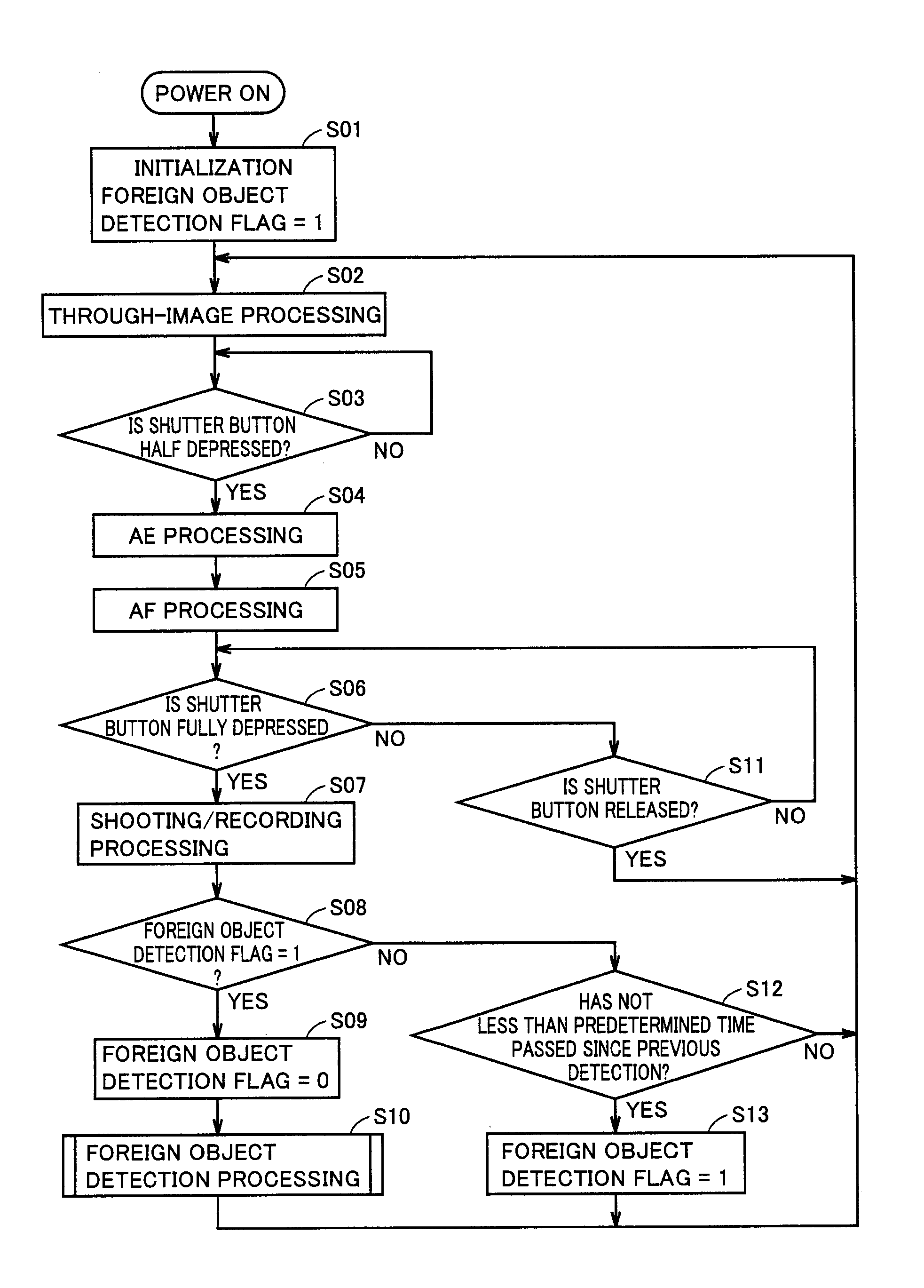Imaging apparatus detecting foreign object adhering to lens
a technology of imaging apparatus and foreign objects, applied in the field of imaging apparatus, can solve the problems of difficult application of lens to digital cameras that require versatility, high cost of lens, and large size of lens itsel
- Summary
- Abstract
- Description
- Claims
- Application Information
AI Technical Summary
Benefits of technology
Problems solved by technology
Method used
Image
Examples
embodiment 1
[0024]FIG. 1 is a schematic configuration diagram showing main portions of a digital camera 10 as an imaging apparatus in accordance with Embodiment 1 of the present invention.
[0025]Referring to FIG. 1, in digital camera 10, an optical image of a subject field is emitted through an optical lens 12 to a light receiving surface, that is, an imaging surface, of an imaging element 16. An aperture mechanism 14 adjusts the amount of light passing through optical lens 12. A shutter 15 adjusts time for which light from the subject field is incident on the imaging surface of imaging element 16 (exposure time). Imaging element 16 generates an electric charge corresponding to brightness / darkness of the optical image of the subject field formed on the imaging surface, that is, a raw image signal, by photoelectric conversion. As imaging element 16, for example, a CCD (Charge Coupled Device) or a CMOS (Complementary Metal-Oxide Semiconductor) is used.
[0026]When power is on, through-image processi...
embodiment 2
[0083]In Embodiment 1 described above, image 1 and image 2 having different depths of field are shot in a state where the focus position of optical lens 12 is set beforehand at the proximate end portion. In such a configuration, the subject in the image looks blurred as shown in FIGS. 4C and 5C. Therefore, in the case where a difference in the degree of blurring of the subject between image 1 and image 2 appears as a difference in brightness between the images, there is a possibility that detection of the difference in brightness may lead to an erroneous determination that a foreign object adheres.
[0084]In foreign object detection processing in accordance with the present embodiment, as means for preventing such a problem, image 1 and image 2 are shot with the aperture changed in a state where the focus position of optical lens 12 is set on a subject.
[0085]FIG. 9 is a flowchart illustrating foreign object detection processing in accordance with Embodiment 2 of the present invention....
embodiment 3
[0087]In Embodiments 1 and 2 described above, shooting is continuously performed with the aperture changed to the open end and the small aperture end after the ordinary shooting processing is completed. Similar effects can also be obtained when shooting is performed with the aperture changed from the state set for the ordinary shooting processing.
[0088]FIGS. 10 and 11 are flowcharts illustrating foreign object detection processing in accordance with Embodiment 3 of the present invention. A control program corresponding to the flowcharts is stored in flash memory 46.
[0089]The flowchart of FIG. 10 is different from the flowchart of FIG. 2 only in that steps S07, S10 in the flowchart of FIG. 2 are replaced by steps 5071, S101.
[0090]Referring to FIG. 10, in step S06, if shutter button 28 is fully depressed (YES in step S06), CPU 30 performs the shooting / recording processing (step S071). On this occasion, the raw image signal with a high resolution output from imaging element 16 is conve...
PUM
 Login to View More
Login to View More Abstract
Description
Claims
Application Information
 Login to View More
Login to View More - R&D
- Intellectual Property
- Life Sciences
- Materials
- Tech Scout
- Unparalleled Data Quality
- Higher Quality Content
- 60% Fewer Hallucinations
Browse by: Latest US Patents, China's latest patents, Technical Efficacy Thesaurus, Application Domain, Technology Topic, Popular Technical Reports.
© 2025 PatSnap. All rights reserved.Legal|Privacy policy|Modern Slavery Act Transparency Statement|Sitemap|About US| Contact US: help@patsnap.com



